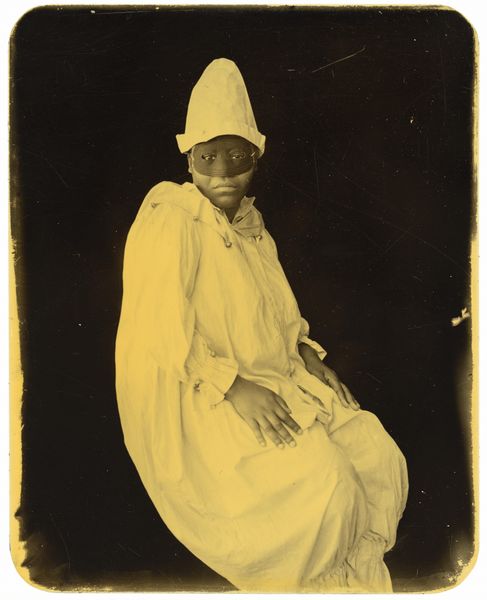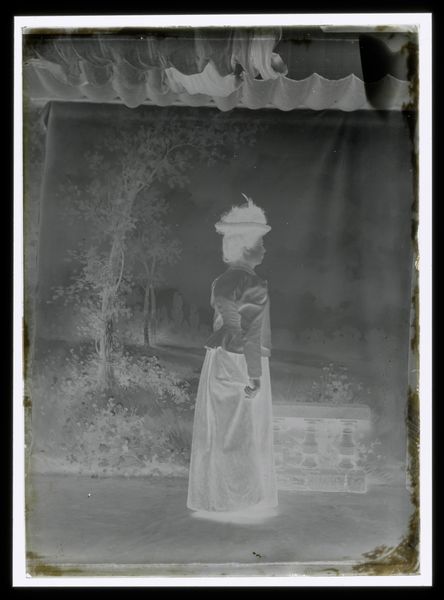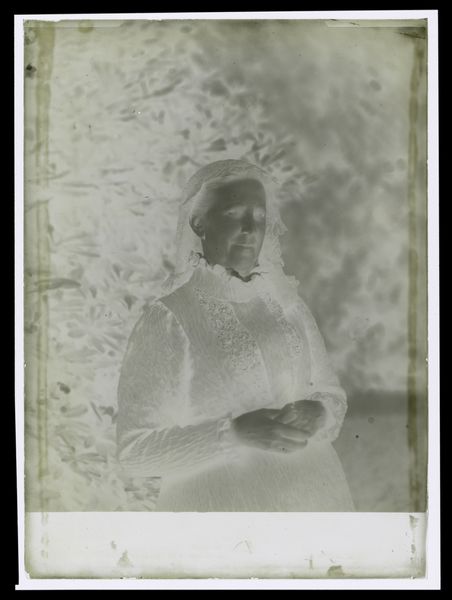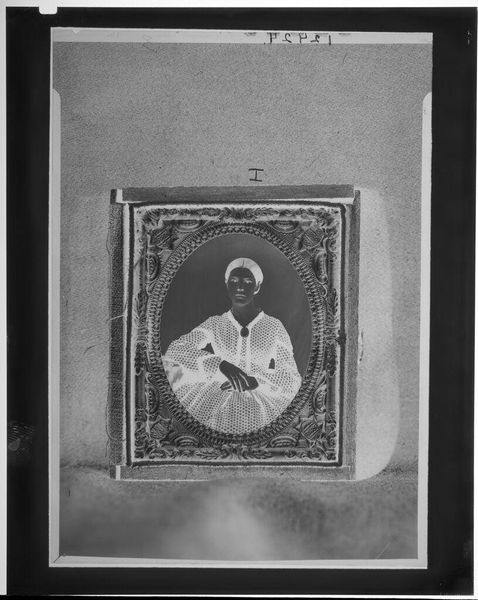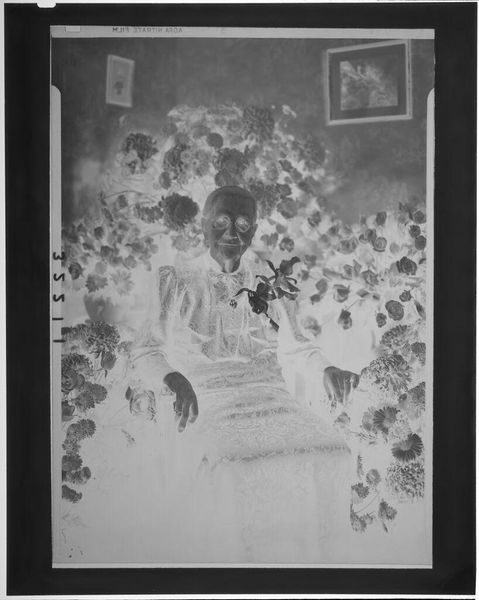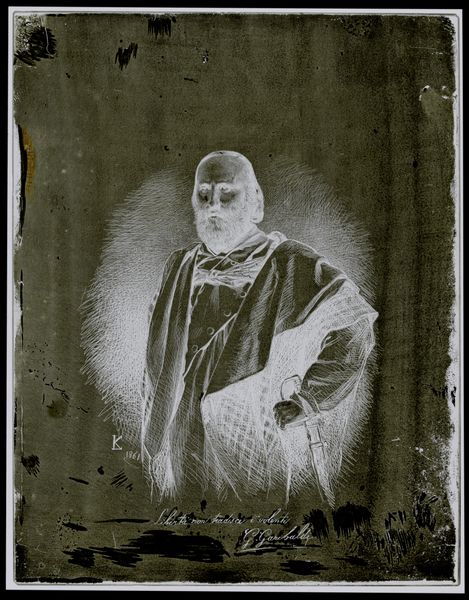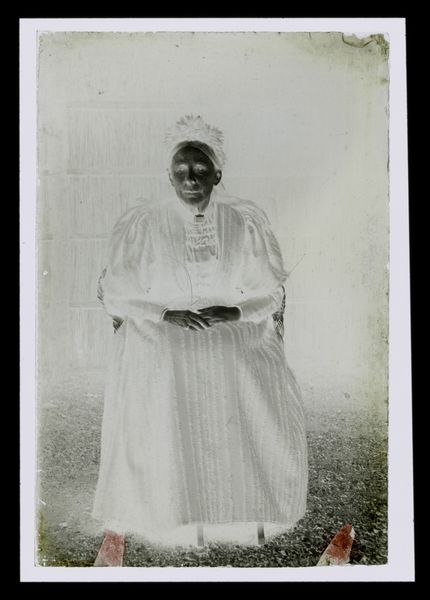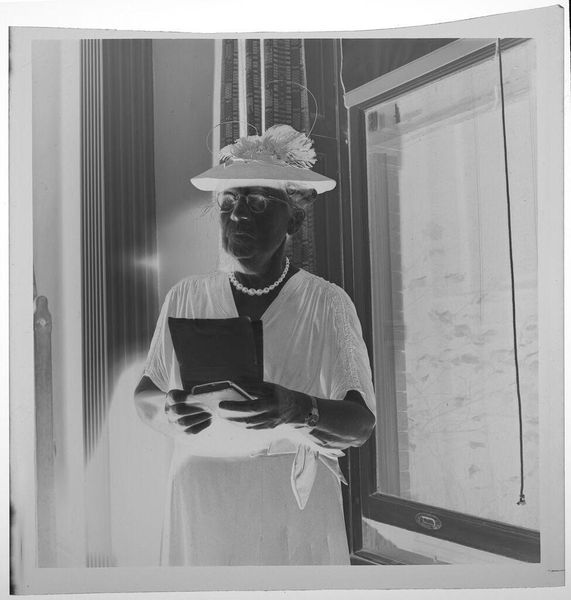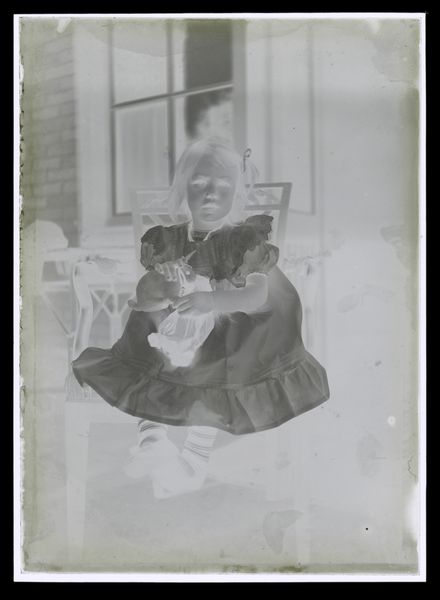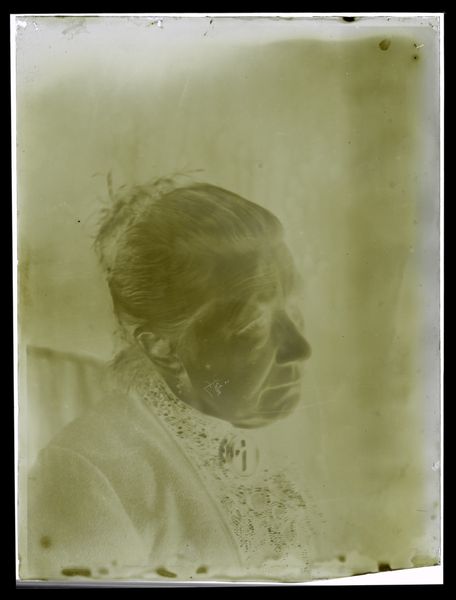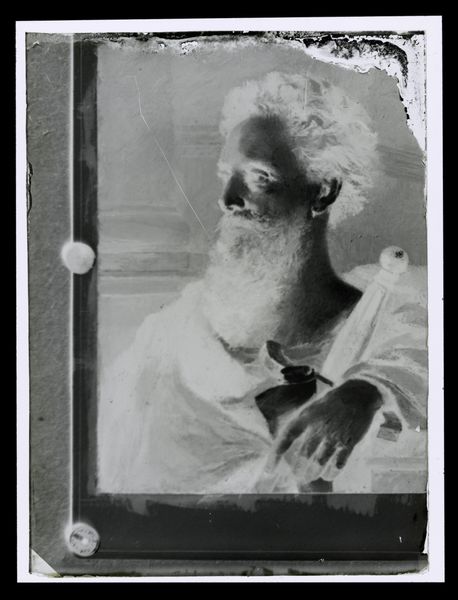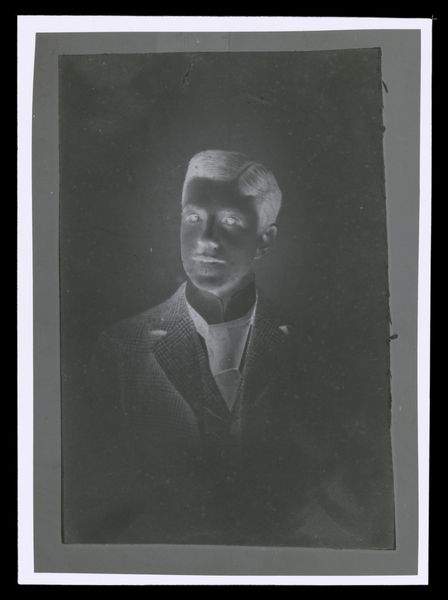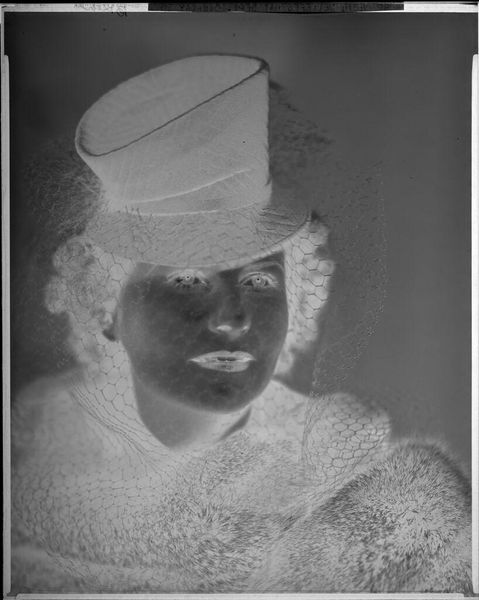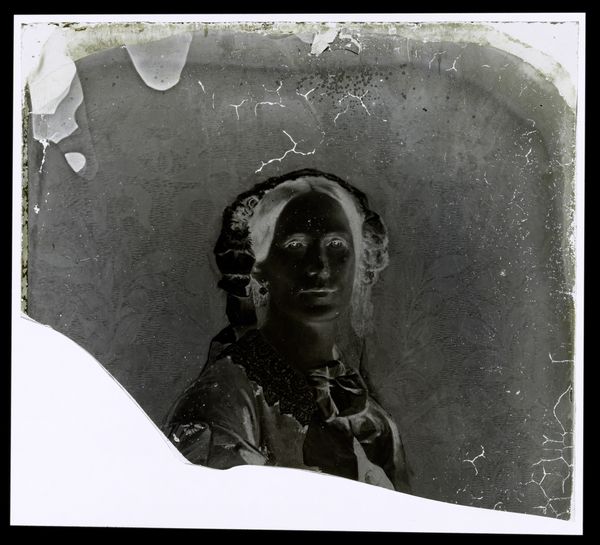
Dimensions: height 118 mm, width 89 mm
Copyright: Rijks Museum: Open Domain
Editor: This is "Portrait of an Unknown Woman," a gelatin-silver print taken sometime between 1865 and 1900, possibly by Laurens Lodewijk Kleijn. I'm immediately struck by the fragility of it. It feels ghostly and ethereal. How do you interpret this work? Curator: Considering the period, and focusing on the materiality, it’s important to recognize gelatin-silver prints as a pivotal shift. We move away from earlier processes, like daguerreotypes, which were unique and often fragile objects, toward something reproducible. What does this change in the means of production signal, socially? Editor: I guess it means photographs became more accessible, less precious… more democratic, maybe? Curator: Precisely. The shift in material facilitated a wider distribution of images. But it’s more than just that. Think about the labour involved. Who was making these photographic materials, and under what conditions? Editor: It sounds like a lot of processing and chemistry... dangerous work, probably poorly paid. What was photography usually used for at the time? Just for formal portraits? Curator: Predominantly, yes. But consider this 'unknown woman' too. Her identity is obscured, becoming a representation of a wider class perhaps now able to have a portrait taken at all due to advances in technique, though her race or position still separates her from access, it is a step to social levelling... What does that accessibility do to notions of privacy and representation for these workers who make the materials of this change? It democratises production too. Editor: So it is like she and the gelatin-silver materials she’s made up of both become commodities to be seen. That’s fascinating… I hadn’t thought about it that way before. Curator: Material informs meaning. Editor: It certainly does! Thank you; I will definitely look at photography differently now.
Comments
No comments
Be the first to comment and join the conversation on the ultimate creative platform.
